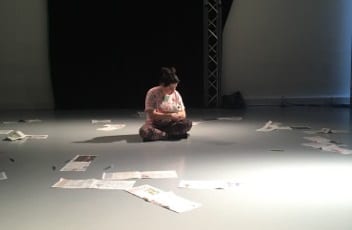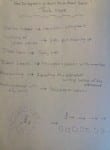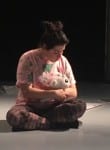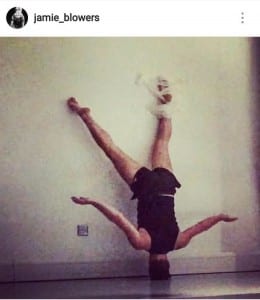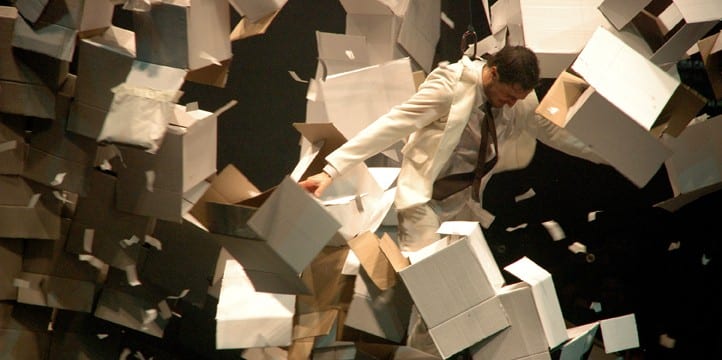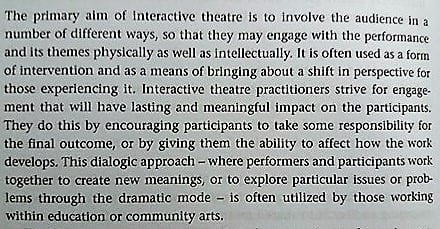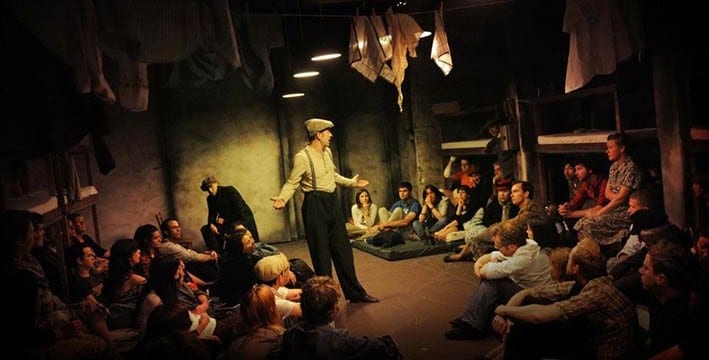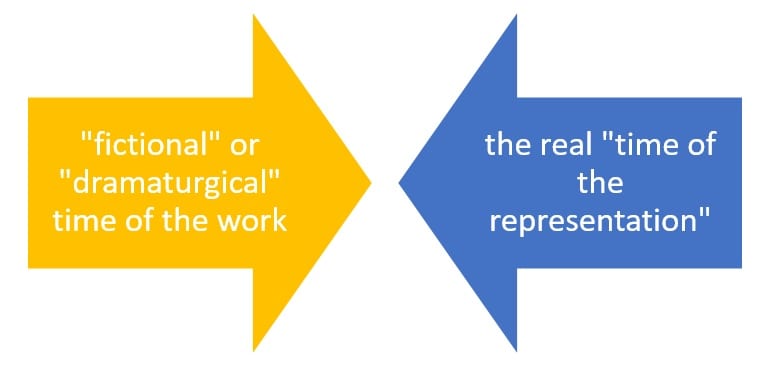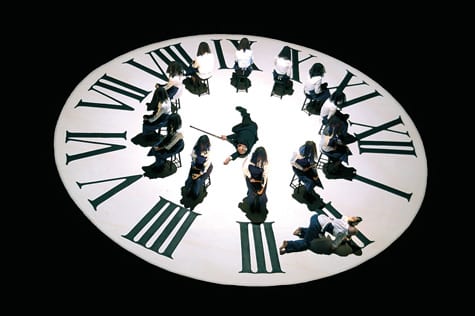Today it was a very productive day.
I had my first rehearsal with my dancers on the piece “Body Pressure”, one of the Seven Easy Pieces of Marina Abramovic. Though it might seem really nothing, the dancers reached what I wanted them to understand: pushing against a wall can become easier, more exhaustive and more natural all in the same moment. As they told me, they felt good towards the end. This is good… Because they are going to be repeating it hundreds of times!
Also, afterwards we had an Examining Choreography class, where we performed our own scores inspired by the Seven Easy Pieces. I chose the “How to explain pictures to a dead hare”.
Jamie, my classmate, performed a piece inspired by “Conditioning” and it was interesting because we participated, too. I had to tape his feet on the wall. It was very creative for me and I was feeling I had to make many decisions, as to where to put the tape, if I hurt Jamie, how fast to do it… Because I was running out of time.
In the end of the class, Kayla Bowtell, our teacher, gave us her score on “Body Pressure” and “Seedbed”. She gave us two eggs and was giving us tasks: tie the egg on your heal, move forward, find each other with your eyes closed, look at each other with your eyes closed, now look at each other at your own time, start using Body Pressure based on the text (where Jamie was pushing me with so much strength, I really feel my back ache!), then we had to rest on/in each other, create 3 poses for each other’s body and repeat 30 times and when we finish, sit down and look at each other, move the chairs towards or far from each other and then the Body Pressure text was on again. So exhausting…
But, I can feel so inspired today. It is amazing what bodies can do, if you don’t tell them to dance, but to just push or use their minds for their bodies! I, also, feel changed. Like I gave a fatal punch to a brick wall of limitations in my mind.
